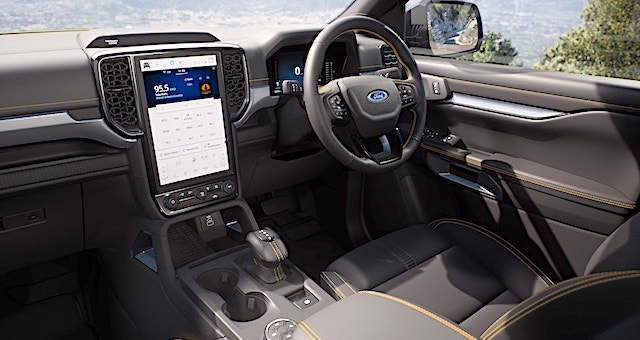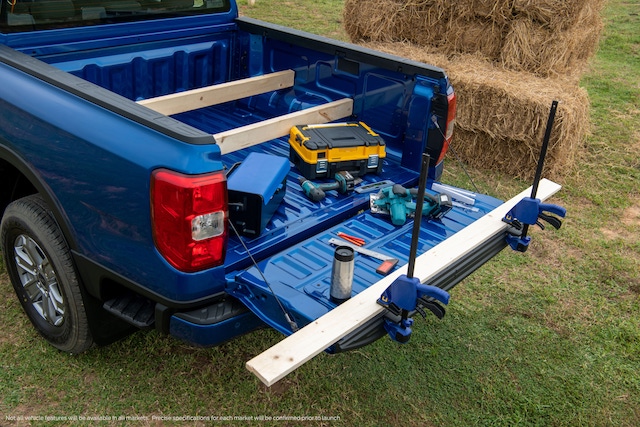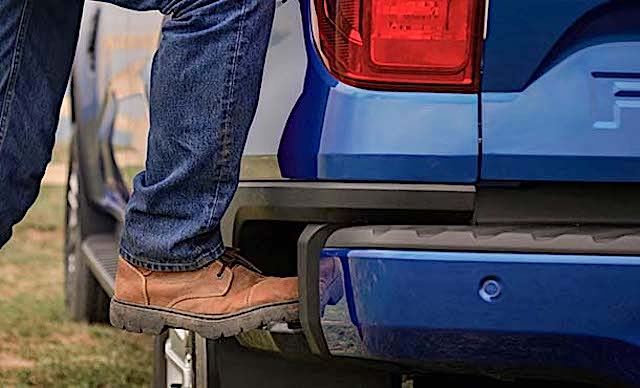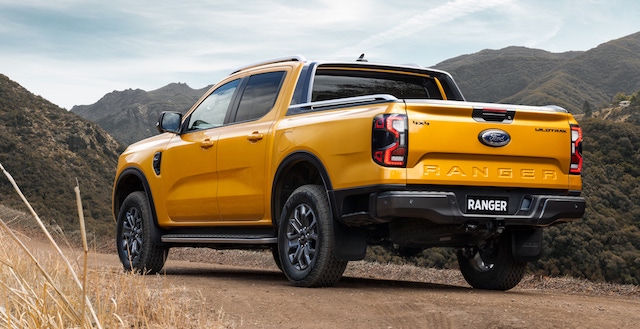
The new Ford Ranger line-up due next year has been designed to further reflect the changing role of utes in New Zealand, from work-only vehicles to family carry-alls.
It was something Mitsubishi identified with the fourth-generation Triton ute 16 years ago. Japanese executives forecast huge growth in the ute sector beyond 2005 and wanted what was then a polarising new Triton design to appeal to a new audience.
Ford’s aim to further boost Ranger’s already widespread appeal will roughly coincide with the government’s proposed emissions tax from April, part of its Clean Car Standard.
The worst-case scenario for utes, based on pricing for the current range of diesel Rangers, is a penalty of upwards of $4660 on top of the purchase price. It will therefore be interesting to see how Ford, with the emissions tax in mind, prices Ranger models when they land here next year.
The new line-up gets more of an all-American look to lure more punters. Ford says it has more of everything: more premium choices, more work choices, each with upgraded interiors.
Ranger 2022 is sure to boost Ford’s lead in the NZ ute market, which has continued unbroken since 2014, the year Ranger overtook the Toyota Hilux by 6330 sales to 5774.
So far in 2021, Ranger has a 24 per cent share with 10,249 sales, while Hilux remains in second place on 16 per cent with 7119. A 25 per cent share for Ranger next year would be unprecedented dominance.
Much of the electronic technology in the new model has filtered down from passenger cars and SUVs. Things like:
- An 8-inch digital instrument cluster and Tesla-style touchscreen – a first for utes – which channels, via WiFi, updates to the engine management and infotainment systems.
- Base models get a 10.1-inch touchscreen, premiums a 12-inch with a voice-control feature. Both touchscreens are supported by buttons and dials for ease of use on the move.
- Smartphone app that can start the engine remotely, or tell the air-conditioning to warm up or cool down the cabin.
- USB and 12-volt ports as standard, plus a wireless phone charging pad on premium models.
- Safety technology that includes an airbag between the front seats, autonomous emergency braking, radar cruise control, speed-sign recognition, blind-zone warning, rear cross-traffic alert, lane-keeping assistance, and a 360-deg camera.
Evidence that Ford wants to further highlight the work/play aspect of the new Ranger comes, for instance, in the high-end double-cab variant, with its ultra-bright ‘puddle lamps’ under the side mirrors and side doorsteps.
Illuminating the ground on one or both sides of the vehicle has multiple benefits, at work or at play. The lights can be controlled individually via the touchscreen or by a smartphone.
There are lights, too, under the capped and wider side rails of the 50mm-wider tray, to help tradies working after dark to find gear or pinpoint the 400W 240-volt socket, or to help campers find stuff. Helping tradies and campers get into the tray is a step at each end of the rear bumper. The tailgate itself has a built-in ruler, cupholder recesses, and clamping points.
The line-up also comes with the choice of three diesel engines – 2.0-litre single turbo, 2.0-litre twin turbo, and 3.0-litre single turbo V6 – in a bigger engine bay, the extra dimensions for the bigger V6 option, room enough for a second battery, and for future-proofing the vehicle for hybrid power. There is already talk of a petrol-electric hybrid, using a boosted 2.3-litre engine.
The current Ranger’s ageing 3.2-litre five-cylinder turbo diesel has been dropped. The V6 oil-burner that takes its place is not new. It was one of the engine choices for the Ford F150 pick-up truck in the US until it was axed from the line-up in July this year because, said a Ford spokesman, “our customers overwhelmingly order our EcoBoost V6 gasoline (petrol) engines.”
The V6 will be paired with a 10-speed gearbox and permanent all-wheel drive with a set-and-forget mode. The 2.0-litre engines will get a six-speed auto with part-time all-wheel drive. There will also be rear drive-only options. A stubby gear lever called an ‘e-shifter’ is the new norm.
New too is a reworked version of the existing platform, to allow a wheelbase that’s 50mm longer and a track 50mm wider than the current model. The front wheels have been moved forward to improve the Ranger’s off-road approach angle, and the rear shock absorbers repositioned to improve both handling and the laden and unladen ride.
- The pictures here are of the global model Ranger. Same with some of the details. NZ spec may differ.




